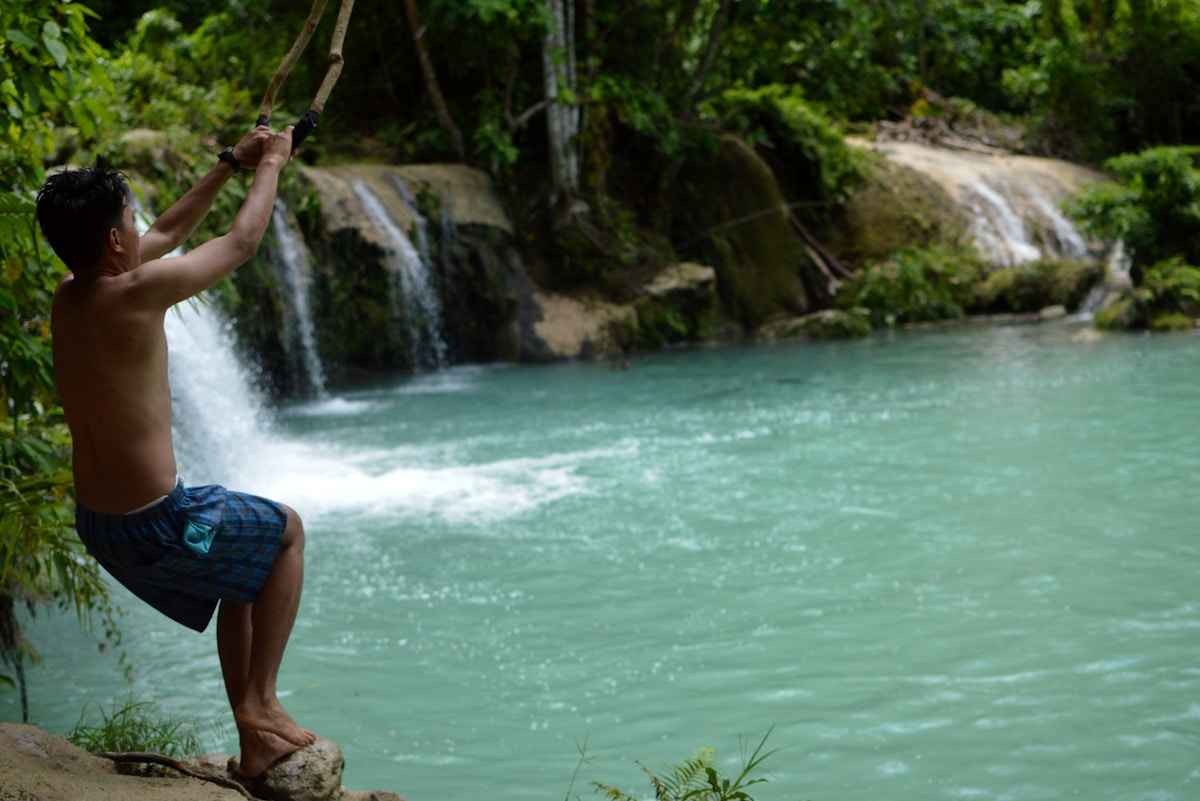‘Plastic holidays on mystic island’: Siquijor’s journey to be the Philippines’ first zero waste destination
By Klaus Stiefel
Copyright eco-business

Today, however, it is also carving out a new identity as the archipelago’s first zero-waste island.
Less than half the size of Singapore and home to just over 100,000 people, Siquijor sits off the southern tip of Negros and Cebu and can only be reached by ferry across the Bohol Sea.
Its allure goes beyond its inviting shores: It has more than a dozen waterfalls, lush forest trails, vividly blue cold springs, a subterranean river, a 400-year-old banyan tree and a community of Indigenous healers who espouse herbal cures, love potions and protective amulets.
Recently topping Agoda’s list as the Philippines’ fastest-growing holiday destination, Siquijor has become a magnet for international travellers. In 2024 alone, tourist arrivals to the remote island surged to 241,529.
This is where the Philippines can lead: advocating for frameworks that link treaty ambitions with lived realities in villages, schools and markets across Southeast Asia.
Carlo Chen-Delantar, head of ESG and circular economy, Gobi Partners
But like many paradise islands before it, Siquijor struggles with the waste left behind by tourists. In 2017, its only sanitary landfill was nearly full. Building another was not an option: the island’s porous limestone geology meant groundwater could easily be contaminated by leachate, and carving out space for another landfill would have meant sacrificing forests.
With nowhere left to dump its trash, the province took the harder road – laying down local legislation to reduce, reuse and eliminate most of its waste.
Building systems with community and policy
Tourism-driven growth brought prosperity but also a surge in single-use plastics. By the mid-2010s, compliance with waste segregation on the island hovered at 10 to 20 per cent, and unmanaged trash was piling up.
In 2017, recognising the crisis, the province passed an ordinance banning styrofoam products and regulating single-use plastics. It subsequently partnered with the non-government organisation Mother Earth Foundation (MEF) to translate the rules into practice.
“Siquijor’s zero waste programme [originally] faced several significant challenges, many of which are common to island and remote communities. These included [a lack of] economic incentives, logistical limitations and enforcement issues,” Raphaelo James Villavicencio, deputy director for programmes at MEF told Eco-Business.
“The issue was compounded by the influx of tourists, who often generate a significant amount of single-use plastic waste.”
In 2017, Siquijor’s islandwide zero-waste programme began with designating Sundays as the island’s first “plastic holiday.” On this day, shopkeepers are not allowed to sell or use any type of plastic bag. By 2019, the “plastic holiday” was expanded to three days a week – Tuesdays, Fridays and Sundays. The island’s public officials later implemented an all-out ban on single-use plastic containers and disposable packaging. Even plastic water bottles of less than a litre and pre-packaged fruit are prohibited on the island.
Market-goers now carry reusable bags and woven baskets, while even small vendors wrap goods in bamboo and banana leaves.
In the last two years, Siquijor’s barangays (small villages) have also begun running their own materials recovery facilities (MRFs) that employ waste workers to compost biodegradable waste, recover recyclables and isolate residual and hazardous waste. Each barangay has its own Zero Waste Task Force that teaches households about segregation and waste reduction, and fines those who break the rules.
Recent waste audits showed that 56 per cent of the island’s trash was compostable and 22 per cent recyclable. Today, at least 65 per cent of the island’s waste is diverted from the landfill, and 89 of Siquijor’s 134 barangays operate their own MRFs.
Villavicencio stressed that the programme’s success has hinged not only on regulating shopkeepers but also mobilising communities and empowering informal waste pickers. “The inclusion and empowerment of waste workers – who are often marginalised – was key. By recognising and integrating them into the system, and providing them with proper training and equipment, the [initiative] both improved their livelihoods and elevated their role.”
“Siquijor demonstrates that zero-waste is not just an environmental goal but also an economic one,” he added. “By establishing a clear link between tourism, livelihood and [waste management], communities are motivated to participate.”
Fragile progress
Siquijor’s zero-waste achievements remain precarious. With no recycling plants on the island, collected recyclables must be shipped to the mainland – an expensive and often unprofitable exercise. The constant influx of cheap plastics, compounded by rising tourist arrivals, continues to strain local systems.
For Villavicencio, these struggles expose weaknesses in the Philippines’ Extended Producer Responsibility (EPR) law. The polluter-pays EPR regulation was first passed in the archipelagic nation in 2022.
“The current EPR law focuses too much on recovery at the post-consumer stage. It obligates [large producers] to collect and recycle a percentage of their plastic, but it has little to no provisions for reducing [their] production,” he said. Unless the framework goes beyond recovery to actively support reuse and refill systems, communities like Siquijor will remain vulnerable to the continuous inflow of problematic plastics.
Carlo Chen-Delantar, head of ESG and circular economy at Gobi Partners, stressed the same point: Siquijor’s experience shows the “urgency of closing the producer responsibility gap.”
Through Circulo, a circular economy collective, he has researched Siquijor’s best practices in hopes they can be adopted elsewhere. “The Philippines’ EPR law remains weak in coverage and enforcement, with limited support flowing to [local government units]. Siquijor proves that local governments can deliver results, but without upstream responsibility, they are carrying a burden they shouldn’t shoulder alone.”
Researcher and lecturer Edward Alegado added that local efforts are undermined by national inconsistencies. Alegado is a PhD candidate at the Australian National University’s Crawford School of Public Policy and a visiting researcher at Silliman University in Dumaguete.
“Even if Siquijor issued a ban on single-use plastics, they cannot stop people from bringing plastic bags from [neighbouring] Dumaguete City, where there is no ban,” he told Eco-Business. “Local initiatives work, but we need a national ban on single-use plastics and full implementation of Republic Act (RA) 9003 throughout the whole country.”
RA 9003, or the Ecological Solid Waste Management Act of 2000, is the Philippines’ main law on waste. It promotes avoiding and reducing trash, recycling and composting, and ensuring proper treatment and disposal.
From island lessons to global negotiations
Experts argue the problem lies even further upstream. Alegado emphasised that recovery alone will never solve the waste crisis. He said that unless we phase out or cap plastic production, plastic packaging will still be produced and continue to undermine local efforts, even if communities like Siquijor practice zero-waste systems.
Villavicencio echoed this point, calling for a more effective EPR framework that would “support and even mandate reuse, which would ultimately lessen the burden on communities and local governments.” Safeguarding Siquijor’s gains, he added, requires institutionalised policies, climate-resilient waste facilities, empowered local offices and a clear carrying capacity limit for tourism.
That debate is now playing out in the Global Plastics Treaty negotiations. Talks to create a binding treaty collapsed again in Geneva last August. While discussions may resume, no new date has been set – but the issue could return to the table at COP30 in Belém, Brazil.
“Recovery alone is not enough,” Villavicencio said. “We need a treaty that addresses plastic pollution at the source – by phasing out the most common single-use and short-lived products, and advancing zero-waste approaches like reuse systems.”
Alegado also warned that without strong treaty language, upstream solutions could again be sidelined. “Sad to say, during the last draft in Geneva, the article tackling primary plastic polymers was removed. Petrochemical states like Saudi Arabia and Russia did not want this because it would affect their economies.”
Chen-Delantar agreed that the Philippines must advocate for closing the “producer loophole.” Binding corporate accountability – mandatory plastic reduction targets, robust EPR obligations, and financing that flows directly to [local government units] – should be priorities, he said. “Siquijor is proof that grassroots efforts can thrive, but only if paired with upstream measures that reduce plastic at the source.”
“This is where the Philippines can lead: advocating for frameworks that link treaty ambitions with lived realities in villages, schools and markets across Southeast Asia,” he explained.
Siquijor shows how a small island, faced with a looming landfill crisis, turned constraint into opportunity by fusing policy, community buy-in and cultural change. Its waterfalls and “plastic holidays” have become symbols of pride and proof that zero waste is achievable.
“We need to tell more success stories like Siquijor,” Alegado said. “But we must also amplify them to push for progressive measures that bring about corporate accountability. Communities are leading the way towards zero-waste and plastic-free solutions, up against big oil and plastic manufacturers who continuously produce plastics.”



